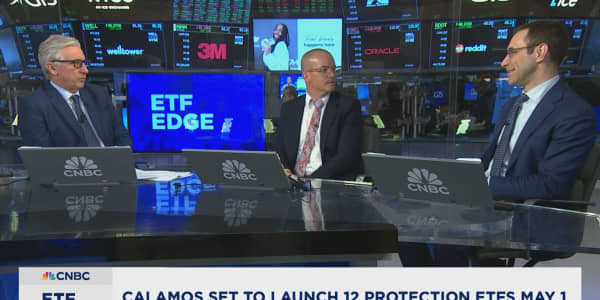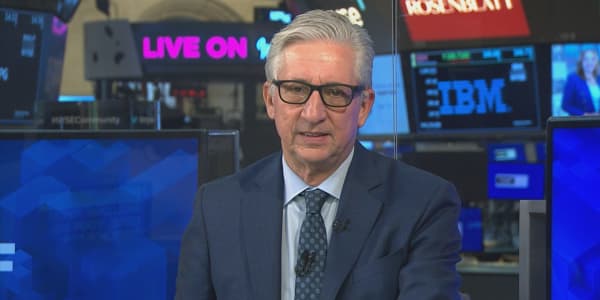
It may be time to get passive aggressive.
The "active vs. passive" investing debate has held strong among Wall Street money managers for years, with passive consistently outperforming active over long time periods despite active management charging higher fees.
S&P Dow Jones Indices' most recent global SPIVA report, which stands for S&P Indices Versus Active and measures how actively managed funds are performing versus their benchmark indices, showed that in the last five years, 82% of active funds in the United States underperformed the S&P 500.
More recently, a report from Cerulli Associates revealed that brokers at "big four" firms Morgan Stanley, Bank of America's Merrill arm, UBS and Wells Fargo had only 29% of their clients' assets invested in passive funds, much lower than the 45% that independent advisors typically allot, according to The Wall Street Journal.
But that could all soon change, says Matt Hougan, managing director and global head of research at cryptocurrency investing firm Bitwise.
"The wirehouses are the late adopters" of passive investing, Hougan said on CNBC's "ETF Edge" on Monday, referring to the aforementioned "big four" broker-dealers. "You're going to see that number tick up from 29% to well over 50%, I think, in the next few years."
Hougan said that with both wirehouses and registered investment advisors, or RIAs, largely embracing passive investing, many people think "the game is over" and passive has definitively won out — but, to him, that's nowhere near the reality.
"I actually still think it's just starting. I think you're going to see index assets continue to grow at both the RIAs and the wires, and the wires are going to have to catch up quickly or they're going to be left behind," he said.
So, why aren't more investors pushing for passive solutions?
GTS Principal Reginald Browne, whose firm is the largest market maker for the New York Stock Exchange, says it's because there's still room for everyone.
"I think ... fee compression across the board will still occur, particularly in active, but I think there's always room for active management in asset allocation. I don't think it'll totally go away," he said in the same "ETF Edge" interview. "My belief is that the pie is big enough for every type of instrument to be utilized."
That leaves the fate of active investing up to two distinct things, Browne said.
"It really comes down to price transparency and [the] best device for an end client. So, if an advisor's still using an active strategy, it's probably the best thing for his client," Browne said. "But single-factor beta ETFs? ... The cost is pretty inexpensive, and I think that they'll be adopted further going forward."
The shift out of active and into passive has long been underway. Between 2014 and 2018, active funds had outflows of $738 billion, while passive funds saw inflows to the tune of $2.5 trillion, Cerulli and research firm Morningstar found.
If you ask Tom Lydon, editor and proprietor of ETFTrends.com and president of Global Trends Investments, that's not going to end anytime soon.
"When we're talking about fees, performance has to be in that same dialogue," he said in the same "ETF Edge" interview, noting that the more active managers earn via commissions without the results to show for it, the more the space will contract.
In short, "there's a lot more room for consolidation," Lydon said.






